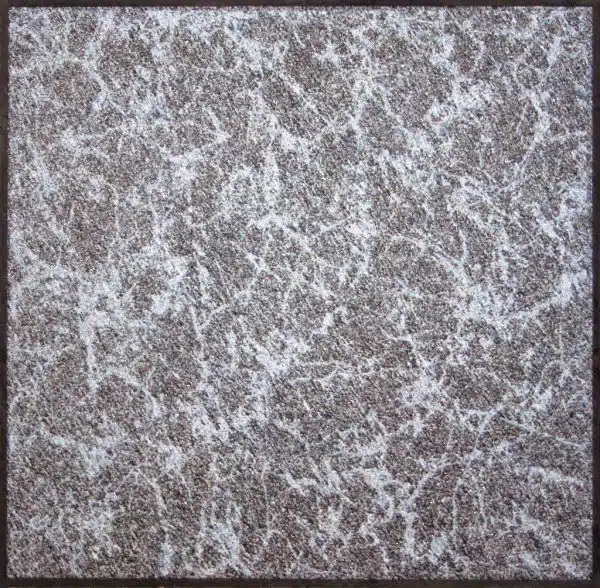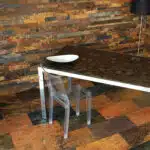Marble floor tiles are a popular choice among homeowners due to their elegance, durability, and versatility. Installing marble floor tiles can be a challenging task, but with the right tools and techniques, it can be accomplished by anyone. As an expert in marble floor tile installation, I have witnessed firsthand the transformation that these tiles can bring to a space.
In this article, I will guide you through the process of installing marble floor tiles step-by-step. From preparing your subfloor to laying the tiles and grouting them, I will share with you my knowledge and experience to help you achieve a flawless finish. Whether you are a seasoned DIY-er or new to home improvement projects, this guide will equip you with the skills needed to successfully install marble floor tiles in your home.
Measuring Your Space For Marble Floor Tiles
One common mistake that homeowners make when installing marble floor tiles is underestimating the importance of measuring accuracy. This is a crucial step because it ensures that you have enough tiles to cover your entire floor without leaving any gaps or overlaps. To achieve this, you need to take precise measurements of your space before purchasing any tiles.
Another crucial consideration when measuring for marble floor tiles is tile size options. Marble tiles come in different sizes, including 12×12 inches, 18×18 inches, and 24×24 inches, among others. The size you choose depends on the size of your room and your personal preference. Larger tiles are ideal for larger rooms since they create an illusion of more space.
To measure accurately for marble floor tiles, begin by sketching out your space on paper with accurate measurements, including width and length. You can use a tape measure or laser level to get precise measurements. Once you have the exact dimensions of your space, you can then determine how many tiles you need to cover it completely. In the next section, we will look at determining the amount of tiles needed in more detail.
Determining The Amount Of Tiles You Need
Before starting your marble floor tile installation project, it is crucial to determine the amount of tiles you need. This will help you calculate the cost and ensure that you purchase enough tiles to complete the job without any delays. To calculate the number of tiles needed, measure the length and width of your space in feet and multiply the two measurements together. This will give you the total square footage of your area.
Once you have determined your space’s square footage, add an additional 10% to account for cuts, breakage, and future repairs. It is always better to have excess tiles on hand than to run out mid-project or discover a damaged tile after installation. When purchasing tiles, be sure to buy all the necessary materials at once to guarantee that they come from the same batch for consistency in color and pattern.
Calculating cost is also essential when determining how many tiles are needed. Factors such as material quality, size, and thickness can affect pricing. Additionally, labor costs should be considered if hiring a professional installer. Keep in mind that cutting corners during this stage can lead to additional expenses down the road in repairs or replacements.
Now that we have covered how to determine how many tiles are needed for your project let us move on to choosing the right marble floor tile for your space.
Choosing The Right Marble Floor Tile For Your Space
Now that you have determined the amount of marble floor tiles you need and have chosen the right type for your space, it’s time to move on to the installation process. Installing marble floor tiles can be a challenging task, but with the right tools and materials, it can be done efficiently and effectively.
Firstly, before beginning any installation work, ensure that you have gathered all necessary tools and materials required for the job. This includes a tile cutter or wet saw, trowel, notched trowel, grout float, tile spacers, level, sponge or cloth for cleaning excess grout off tiles and grout itself. Having all these items in place before starting will save time and make the process smoother.
Next comes choosing the right marble tile finishes and color options for your project. Marble tiles come in various finishes such as polished, honed or brushed. The polished finish provides a glossy look while honed offers a matte look with less shine. Brushed finish gives a soft texture to touch while providing anti-slip features due to its rough surface. When it comes to color options for marble tiles there are plenty of choices available ranging from pure white to greyish blue shades which are ideal for contemporary interiors. A wide range of bright colors like orange or yellow can be used to add an exciting pop of color into any room.
In conclusion, installing marble floor tiles requires attention to detail but with proper planning and execution it can turn out perfectly beautiful. With the right tools and materials at hand along with knowledge about different finishes and color options available in marble flooring one can easily achieve their desired look within their budget constraints. Now let’s move on to gathering the necessary tools and materials required for installing marble floor tiles!
Gathering The Necessary Tools And Materials
To ensure a successful marble floor tile installation, it is important to gather the necessary tools and materials beforehand. Choosing the right tools is critical in achieving a professional-looking finish. Some of the essential tools that you will need include: a tile saw, trowel, notched trowel, level, measuring tape, rubber mallet, grout float, and sponge. These tools can be purchased or rented from your local home improvement store.
Finding affordable materials is also crucial when installing marble floor tiles. It is recommended to buy extra tiles in case of breakage or damage during the installation process. When choosing marble tiles, consider factors such as durability and slip resistance. It’s also crucial to consider the size of the tiles to ensure they fit well with your room’s dimensions. You should also purchase high-quality grout and adhesive that are compatible with your chosen marble tiles.
In summary, choosing the right tools and finding affordable materials are vital in preparing for a marble floor tile installation project. By investing in high-quality tools and materials, you can guarantee better results and reduce costs in the long run. In the next section, we will discuss how to prepare your subfloor for tile installation to ensure a smooth and even surface for your new marble floor tiles to sit on.
Preparing Your Subfloor For Tile Installation
Proper subfloor preparation is crucial to ensuring a successful tile installation. Before laying any tiles, it is important to assess the condition of your subfloor and make any necessary repairs or adjustments. This will help ensure that your tiles adhere properly and remain in place over time.
To prepare your subfloor for tile installation, you will need a few essential tools and materials. These may include a level, chalk line, measuring tape, circular saw or jigsaw, drill with mixing attachment, and trowel. Depending on the condition of your subfloor, you may also need patching compound or self-leveling underlayment.
Common subfloor issues that can affect tile installation include uneven surfaces, cracks or dips in the floor, and moisture issues. Uneven surfaces can be addressed with self-leveling underlayment or by installing an additional layer of plywood over the existing subfloor. Cracks and dips should be filled with patching compound before laying tiles. Moisture issues can often be prevented by installing a moisture barrier between the subfloor and tiles.
In preparing your subfloor for tile installation, it is important to take your time and address any issues thoroughly before moving forward. By using proper tools and techniques and addressing common subfloor issues as needed, you can ensure a smooth installation process that results in beautiful and long-lasting marble floor tiles. In the next section, we will discuss how to create a tile layout plan to further streamline the process of installing your new marble floors.
Creating A Tile Layout Plan
When it comes to installing marble floor tiles, one of the most important steps is creating a tile layout plan. This involves determining the color scheme and design of the tiles, as well as any border designs that will be included. By taking the time to carefully plan out the layout before beginning installation, you can ensure that the final result will be both aesthetically pleasing and functional.
To create a tile layout plan, start by considering your color scheme. Marble comes in a wide range of colors and patterns, so take some time to explore your options and choose those that best match your overall design vision. Once you have selected your tiles, consider adding border designs or other decorative elements to enhance the look of your flooring.
To assist with this process, you may find it helpful to create a table outlining your different options for color schemes and border designs. In one column, list each color option along with its corresponding pattern. In another column, list potential border designs or other decorative elements that could be added to enhance each option. By creating a visual representation of your ideas in this way, you can easily compare and contrast different layouts until you find one that meets all of your needs.
Now that you have created your tile layout plan, it’s time to move on to cutting marble floor tiles to size. This step is crucial for ensuring that each tile fits perfectly into its designated space, so be sure to pay close attention to detail throughout the process. With careful planning and execution, you can achieve stunning results with your marble floor tile installation project.
Cutting Marble Floor Tiles To Size
After preparing the surface for installation, the next step is cutting the marble floor tiles to size. This task requires precision and care to ensure that each tile fits perfectly into its designated space. There are several cutting techniques, including using a wet saw or a manual tile cutter.
When using a wet saw, it’s important to wear safety goggles and gloves to protect yourself from flying debris and sharp edges. The saw should be set up according to the manufacturer’s instructions, and practice cuts should be made on scrap tiles before cutting the actual marble pieces. For manual tile cutters, score lines are made on the surface of the tile with a specialized tool before snapping it along the scored line.
Regardless of which cutting technique is used, it’s essential to measure each tile accurately before making cuts. Precision is key in ensuring that all tiles fit snugly together without gaps or overlaps. It’s also recommended to purchase extra tiles in case any mistakes are made during the cutting process.
Safety precautions must always be taken when working with marble floor tiles as they can easily crack or break if not handled properly. By following these cutting techniques and safety measures, installing marble floor tiles will result in a beautiful and long-lasting addition to any home or space.
With each tile cut precisely to size, the next step is applying thinset mortar to the subfloor. This crucial step ensures that each tile adheres firmly in place without shifting or cracking over time.
Applying Thinset Mortar To The Subfloor
After cutting your marble floor tiles to size, the next step is to apply thinset mortar to the subfloor. But before you start mixing the thinset mortar, ensure that the subfloor is clean and free from any debris. Any debris or dust on the subfloor can affect the adherence of the mortar to the surface.
Mixing thinset mortar requires attention to detail. Follow the manufacturer’s instructions and mix it in small batches as needed. The consistency of your mixture should be similar to peanut butter, not too thick or too runny. Once you achieve this consistency, use a trowel to spread it evenly across your subfloor.
To ensure an even surface for laying your marble floor tiles, smooth out the thinset mortar with a notched trowel. Use long back-and-forth motions in one direction and avoid creating waves or ridges on the surface. After smoothing out a section of your subfloor, lay your first tile in place by pressing it down firmly into position. Repeat this process until all tiles are laid out in their designated pattern.
- Use protective gear such as gloves and safety glasses when mixing and applying thinset mortar.
- Work in small sections at a time so that you can lay your tiles before the mortar dries up.
- Always follow manufacturer’s instructions when mixing thinset mortar.
- For better adherence, roughen up glossy surfaces with sandpaper before applying thinset mortar.
- Before laying out marble floor tiles, plan ahead by arranging them dry first to ensure they fit properly and look aesthetically pleasing.
Now that you have applied thinset mortar evenly across your subfloor and smoothed it out nicely, it’s time to lay out your marble floor tiles according to your desired pattern. By following these steps carefully, you can create an elegant and durable marble floor that will last for years to come.
Laying Marble Floor Tiles In The Designated Pattern
Laying marble floor tiles in the designated pattern requires precision and attention to detail. It is crucial to select the right type of marble that suits your design preferences and style. Marble selection is an essential aspect of this process as it determines the final look and feel of your floor. It is best to choose a high-quality marble that is durable, scratch-resistant, and easy to clean.
Tile spacing is another critical factor that affects the overall appearance of your marble floor. The recommended tile spacing for marble tiles is 1/8 inch or less. This ensures that the tiles are evenly spaced and aligned, creating a seamless finish. To achieve this, you can use tile spacers or wedges to ensure consistent spacing between each tile.
Incorporating a table into this process can help you keep track of your progress and ensure that everything stays organized. Use a 2 column by 5 row table to record details such as tile measurements, spacing, location, adhesive used, and curing time. This information will come in handy during future maintenance or repair work. With these tips in mind, you can lay your marble floor tiles with confidence knowing that they will look stunning for years to come.
To complete the installation process, cutting tiles for edges and corners is necessary. This step involves measuring each tile’s size before cutting them to fit around obstacles such as walls or cabinets. It may be challenging at first, but with practice and patience, you can achieve a flawless finish on your marble floor. Remember always to measure twice before cutting once to avoid costly mistakes.
Cutting Tiles For Edges And Corners
Accurate measurements and markings are essential for a successful marble floor tile installation. Common tools used for cutting tiles include tile nippers, tile cutters and wet saws. Making precision cuts for edges and corners of tiles is a delicate process and requires a steady hand. When cutting tiles for edges and corners, it is important to use a ruler or measuring tape to mark the area of the tile that needs to be cut. The tile cutter should be used to score the tile along the marked line and then the nippers should be used to break off the excess material. When cutting tiles for curves and circles, the wet saw is the best tool for achieving a smooth, precise cut.
Measuring And Marking
Achieving a professional finish when installing marble floor tiles requires precision and accuracy in every step of the process. One critical aspect is measuring and marking the tiles before cutting them for edges and corners. The installation expert must ensure that every tile fits seamlessly with no gaps or overlaps. To achieve this, they need to use accurate measuring techniques to get the exact dimensions of the floor area.
Measuring accuracy is crucial to avoid any errors that could lead to tile wastage, delays, or even additional costs. Therefore, an expert in marble floor tile installation should use precise tools such as a tape measure, framing square, and laser level to get the correct measurements. They should also double-check their measurements before marking the tiles to eliminate any chances of mistakes.
Marking techniques are equally vital when cutting tiles for edges and corners. An installation expert needs to mark each tile correctly according to its purpose and design pattern. They can use a pencil, chalk line or masking tape to mark each tile’s cut line accurately. Additionally, they should leave some allowance on each edge for grout lines while ensuring that each tile’s marked cut line aligns with adjacent tiles’ cuts.
In conclusion, measuring accuracy and marking techniques are integral parts of cutting marble floor tiles for edges and corners. An experienced marble floor tile installer must be proficient in using measuring tools and marking techniques to achieve high-quality results that meet client expectations. By following these best practices, you can install your marble floor tiles with precision and confidence!
Tile-Cutting Tools
Cutting tiles for edges and corners is a critical aspect of marble floor tile installation. It requires precision, accuracy, and the use of appropriate tools. Tile-cutting tools are essential for achieving clean and accurate cuts that fit seamlessly with adjacent tiles. There are various cutting techniques that an expert in marble floor tile installation can use to achieve high-quality results.
One essential tool for cutting tiles is the tile saw. A tile saw uses a diamond blade to cut through hard materials such as marble. When using a tile saw, safety precautions must be taken to avoid injuries or damages. The installation expert should wear safety goggles, gloves, and ear protection to prevent dust and noise from harming them. Additionally, they should use a water source to cool down the blade and minimize dust production.
Another crucial tool for cutting tiles is the angle grinder. An angle grinder is ideal for making curved or circular cuts on tiles’ edges and corners. Like a tile saw, safety precautions must be observed when using an angle grinder. The installer should wear protective gear such as goggles, gloves, and earplugs to protect against flying debris or noise pollution.
In summary, cutting tiles for edges and corners requires precise tools such as tile saws and angle grinders. To achieve high-quality results, an experienced installer must be proficient in using these tools while observing safety precautions. By following best practices in measuring accuracy, marking techniques, and tool usage, you can install your marble floor tiles with confidence!
Cutting Tiles For Edges And Corners
Cutting tiles for edges and corners is an essential aspect of marble floor tile installation that demands precision and accuracy. The process requires using appropriate tools and techniques to achieve clean and accurate cuts. Cutting tiles for edges and corners can be challenging, but with the right tools, an experienced installer can achieve high-quality results.
When cutting tiles for edges and corners, there are various cutting techniques that a marble floor tile installation expert can use to achieve the desired results. The cutting techniques used may vary depending on the type of tile being cut, the size of the cut, and the level of precision required. Therefore, it is crucial to have a clear understanding of what each technique entails before choosing which one to use.
It is important to note that safety precautions must be taken when cutting tiles for edges and corners. Marble is a hard material that requires special tools such as tile saws or angle grinders. When using these tools, it’s essential to wear protective gear such as goggles, gloves, and earplugs to avoid injuries or damages. By following best practices in measuring accuracy, marking techniques, and tool usage while observing safety precautions during the installation process, you can ensure high-quality results that will last for years to come.
Allowing The Tiles To Set Overnight
Once you have placed all the tiles, it is important to allow them to set overnight. This will ensure that they adhere properly and are ready for grouting the following day. Proper adhesion is crucial for a long-lasting and durable marble floor installation.
To ensure proper tile adhesion, make sure that each tile is level and evenly spaced. Use a spirit level to check that each tile is flush with its neighbor, and adjust as necessary. It is also important to use the correct adhesive for your specific type of marble tiles. Follow the manufacturer’s instructions carefully and use only the recommended amount of adhesive.
Best practices for curing the tiles overnight include keeping the room at a consistent temperature of around 70 degrees Fahrenheit (21 degrees Celsius), with low humidity levels. Avoid walking on or disturbing the tiles during this time, as this can cause them to shift or move out of place. Covering the area with plastic sheeting can help keep dust and debris from settling on the tiles while they set.
As you allow your marble floor tiles to set overnight, take some time to prepare for grouting them in the morning. Make sure you have all necessary tools and materials ready, including grout, a float, a sponge, and clean water. With proper preparation and attention to detail during this step of your installation process, you can achieve a beautiful and long-lasting marble floor that will enhance any space it’s in.
Applying Grout To The Tiles
As the tiles are set in place, it’s time to apply grout. Grout is a mixture of cement, sand, and water used to fill the gaps between tiles. Its purpose is both functional and aesthetic. Not only does grout hold the tiles in place, but it also prevents moisture from seeping underneath them.
Using different grout colors can help enhance the beauty of your marble floor tile installation. Light-colored grouts are popular because they highlight the natural beauty of marble floors. However, darker shades can also be used to create contrast or complement other elements in your room’s design. Whatever color you decide on, ensure that it complements your overall decor and style.
Preventing grout haze is crucial for ensuring a spotless finish on your marble floor tiles. To prevent this haze from occurring, keep a bucket of clean water nearby and rinse each section with a damp sponge immediately after applying the grout. Make sure to change out the water regularly throughout the process. Once completed, wait 24-72 hours before walking on the floor or sealing it to allow sufficient drying time.
Now that you have applied grout, it’s important to let it dry thoroughly before moving onto cleaning the tiles and removing excess grout.
Cleaning The Tiles And Removing Excess Grout
After applying grout to the tiles, it is important to clean them thoroughly and remove any excess grout. This step is crucial in ensuring that your marble floor tiles look their best and are free from any unsightly blemishes. To prevent grout haze from forming on your tiles, it is important to use the right cleaning products.
When choosing cleaning products for your marble floor tiles, make sure that they are specifically designed for use with marble. Using harsh chemicals or abrasive cleaners can damage the surface of your tiles and leave them looking dull and worn. Instead, opt for a gentle cleaner that will lift dirt and stains without damaging the surface of your tiles.
Once you have chosen the right cleaning products, it’s time to start cleaning your tiles. Begin by wiping down each tile with a damp cloth to remove any dirt or debris. Next, apply the cleaner according to the manufacturer’s instructions and use a soft-bristled brush to gently scrub away any remaining grout residue. Finally, rinse the tiles thoroughly with clean water and allow them to dry completely before walking on them or placing any furniture on top.
As you wait for the grout to dry completely, take some time to inspect your newly installed marble floor tiles for any imperfections or areas that may need additional attention. If you notice any issues, be sure to address them before allowing foot traffic back onto your floors. With these tips in mind, you can keep your marble floor tiles looking beautiful for years to come!
Allowing The Grout To Dry
As the grout is applied to the marble floor tiles, it can be easy to get caught up in the excitement of seeing your vision come to life. However, it is important to allow ample time for the grout to dry before moving on to the next step. This drying time can vary depending on factors such as humidity and temperature, but it is recommended to wait at least 24 hours before walking on or cleaning the newly grouted tiles.
While you wait for the grout to dry, take this opportunity to consider your options for grout color. The color you choose can greatly impact the overall look of your marble flooring. Do you want a contrasting color that emphasizes each individual tile? Or do you prefer a more uniform look that blends seamlessly with the marble? With a variety of colors available, from classic white and gray to bold blues and greens, there is sure to be an option that suits your personal style.
Once the grout has fully dried, it’s time to move on to applying a sealant. But before we get ahead of ourselves, let’s make sure that everything is set with the grouted tiles. Use a finger or small tool to gently press down on each tile; if any feel loose or wiggly, apply additional adhesive and let it dry completely before continuing. With this step complete and your grout color chosen, you’re one step closer to enjoying beautiful marble flooring in your home or business.
Applying A Sealant To The Marble Floor Tiles
After the marble floor tiles have been properly installed, it is crucial to apply a sealant to protect them from staining and discoloration. There are various types of sealants available in the market, but it is essential to choose the best one for your specific type of marble tile. Some of the best sealant brands for marble include StoneTech BulletProof Sealer, Miracle Sealants 511 Impregnator, and Aqua Mix Sealer’s Choice Gold.
Before applying the sealant, ensure that the surface of the tiles is clean and free from any dirt or debris. It is recommended to use a pH-neutral cleaner and a soft cloth or mop to remove any stains or spills on the tiles. Once cleaned, wait for at least 24 hours before applying the sealant. This will allow enough time for the tiles to dry completely.
After applying the sealant, it is important to maintain it regularly to ensure that your marble floor tiles remain protected. Avoid using acidic cleaners or abrasive materials as they can damage the sealant and cause discoloration or etching on the tiles. Instead, use a pH-neutral cleaner and a soft cloth or mop to clean your floors regularly. Additionally, reapply the sealant every 6-12 months depending on foot traffic and use of your space to provide maximum protection for your marble floor tiles. By following these tips for maintaining sealant, you can prolong its lifespan and keep your floors looking as good as new for years to come.
Conclusion
Marble floor tiles are a luxurious addition to any space, but the installation process can be daunting. To begin, measure your space accurately and determine the amount of tiles you need. Choose a marble tile that complements your existing decor and gather all necessary tools and materials.
Preparing your subfloor is crucial for a successful installation. Ensure it is level and free of debris before beginning. Apply grout to the tiles and clean any excess material thoroughly. Allow the grout to dry completely before applying a sealant to protect against damage.
As an expert in marble floor tile installation, I assure you that with patience and attention to detail, you can achieve stunning results in your home or business. Remember to take measurements carefully, prepare your subfloor properly, and apply sealant for long-lasting protection. With these steps, your marble floor tiles will be a beautiful investment for years to come.
Image Credits
- “Contemporary resort smooth floor tile texture in marbled, mottled monochrome.” by Brian Reynolds (featured)





























